| About Us | Contact Us | Calendar | Publish | RSS |
|---|
|
Features • latest news • best of news • syndication • commentary Feature Categories IMC Network:
Original Citieswww.indymedia.org africa: ambazonia canarias estrecho / madiaq kenya nigeria south africa canada: hamilton london, ontario maritimes montreal ontario ottawa quebec thunder bay vancouver victoria windsor winnipeg east asia: burma jakarta japan korea manila qc europe: abruzzo alacant andorra antwerpen armenia athens austria barcelona belarus belgium belgrade bristol brussels bulgaria calabria croatia cyprus emilia-romagna estrecho / madiaq euskal herria galiza germany grenoble hungary ireland istanbul italy la plana liege liguria lille linksunten lombardia london madrid malta marseille nantes napoli netherlands nice northern england norway oost-vlaanderen paris/Île-de-france patras piemonte poland portugal roma romania russia saint-petersburg scotland sverige switzerland thessaloniki torun toscana toulouse ukraine united kingdom valencia latin america: argentina bolivia chiapas chile chile sur cmi brasil colombia ecuador mexico peru puerto rico qollasuyu rosario santiago tijuana uruguay valparaiso venezuela venezuela oceania: adelaide aotearoa brisbane burma darwin jakarta manila melbourne perth qc sydney south asia: india mumbai united states: arizona arkansas asheville atlanta austin baltimore big muddy binghamton boston buffalo charlottesville chicago cleveland colorado columbus dc hawaii houston hudson mohawk kansas city la madison maine miami michigan milwaukee minneapolis/st. paul new hampshire new jersey new mexico new orleans north carolina north texas nyc oklahoma philadelphia pittsburgh portland richmond rochester rogue valley saint louis san diego san francisco san francisco bay area santa barbara santa cruz, ca sarasota seattle tampa bay tennessee urbana-champaign vermont western mass worcester west asia: armenia beirut israel palestine process: fbi/legal updates mailing lists process & imc docs tech volunteer projects: print radio satellite tv video regions: oceania united states topics: biotechSurviving Citieswww.indymedia.org africa: canada: quebec east asia: japan europe: athens barcelona belgium bristol brussels cyprus germany grenoble ireland istanbul lille linksunten nantes netherlands norway portugal united kingdom latin america: argentina cmi brasil rosario oceania: aotearoa united states: austin big muddy binghamton boston chicago columbus la michigan nyc portland rochester saint louis san diego san francisco bay area santa cruz, ca tennessee urbana-champaign worcester west asia: palestine process: fbi/legal updates process & imc docs projects: radio satellite tv |
Environment:
1 next page |
single feature archives |
weekly archives
Long Beach: What the frack?! On Tuesday, March 24th, the state of California held an "Aquifer Exemption Workshop" to show oil industry representatives how to exploit loopholes for drilling and disposal projects to obtain aquifer exemption approval. Concerned water drinkers interrupted the state-sponsored workshop on how to get away with poisoning our drinking water.
As the presenter at the podium droned on about "EPA Aquifer Exemption Criteria," one woman stood up from her banquet table to declare: "I just have to say one thing. This is backwards. It was just announced in the news that industry injected 2,500 wells illegally... Shouldn't you be having a workshop on how to stop that instead of how to get around, to get exempt from these regulations?" Another woman entered the room waving two bottles of brown liquid. "I actually brought some poisoned water to show everyone what we're going to be exposed to and forced to drink if this poisoning of our water by our regulators continues." Approaching the podium and handing out the poisoned water, she asked, "Would you feel like drinking this water?" Full story and video: Californians Shame Regulators For Teaching Big Oil How To Skirt Law and Pollute Our Water by Los Angeles Peoples Media
While the broad population, through its taxes, has been helping to start the electric vehicle business, the benefits of electric cars and plug-in hybrids isn't being distributed evenly.
Electric cars cannot easily be charged at home, because the voltages and current available on regular household circuits – 110 volts and 15 amps – is too low to charge the car rapidly. It takes 10 to 20 hours to charge a car fully. (It also requires that one live in a house with a garage with electricity. Apartment dwellers and people who park on the street – typical in older neighborhoods – cannot have electric cars.) The charging times can be reduced to half an hour or so with charging stations that deliver electricity at a higher current, and a higher voltage. Thus, electric vehicle owners are dependent on high-current charging stations to get a quick charge. Areas without charging stations are “high risk” areas in which one might find themselves unable to reach a charging station before the battery runs out. In Los Angeles, these areas are East LA and South LA. A look at the map (at the Plugshare website) shows high densities of charging stations downtown, in Hollywood, and on the westside and Santa Monica, where wealthier people live. Article and charger map: The Electrical Divide: Car Charger Deserts by nobody
INGLEWOOD, CA -- Dressed as bees, several people collapsed on the floor of pesticide aisle at Home Depot on S La Cienega Blvd this Saturday morning.
Aside from the theatrics, the activists cheerfully announced to shoppers and staff alike, "today is International Honey Bee Day! Join the fight to Save the Bees!" and handed out pamphlets titled "The Plight of the Honeybee" linking the collapse of 40% of honey bee colonies in the last decade in the United States to the use of insecticidal seed treatment in genetically engineered (GE or GMO) crops. Other actions in Southern California included ones in San Diego and Long Beach. Full story and photos: Southern California Swarms to Save the Bees in Solidarity with Honey Bee Day Around the Globe by Occupy Los Angeles OWS HOLLYWOOD -- On Saturday May 24th, people from the Los Angeles area responded to the global call to action for a "March Against Monsanto" by collaborating to produce an urban gardening festival with the theme "It's time to take back our food!"
The day started at 10 AM at vegan café Elderberries (7564 Sunset Blvd), where 3,000 edible, organic seedlings were on hand for distribution during the "Plant Against Monsanto" portion of the day. Kale and tomatoes were just a few of the open-pollinated non-genetically engineered (GE) varieties given away. Volunteer Morgan Peters was one of the people to address the crowd, "There is a lot you can do on a daily basis. There's a lot going on right now in California. There's a bill in the senate that will be voted on next week (looks like it will be Wednesday), and it's for labeling GMOs. It's called SB 1381 and it's just like Prop 37 except it's a little cleaner, streamlined, a little fresher." Full story and pictures: Los Angeles community members unite in Hollywood to #FarmLA and Plant Against Monsanto by Jessica Lux Hahamongna is a Native American village site at what's now the base of JPL (Jet Propulsion Laboratory) and currently threatened by an overly-elaborate plan to renovate Devil's Gate Dam. This plan involves defoliating the area. Alternative plans would spare the ecosystem; however, the more grandiose one seems to be favored because more money is involved. Those interested in a more sustainable approach to cleaning Devil's Gate Dam are encouraged to contact their city council members (if residents of Pasadena) or Supervisor Michael D. Antonovich (if residents of Los Angeles County). The Arroyo Seco Foundation conducts regular tours, not only of Hahamongna Watershed Park (known for many years as Elk Grove Park) but the surrounding areas, identifying the many uses of local native plants. Participants of the 4th Annual Hahamongna Walkabout (and Bikeabout) learned about local Indigenous culture and got to eat pancakes made from local acorns and sample chia seeds and elderberries. Story and photos: Report Back: 4th Annual Hahamongna Walkabout by R. Plesset Update: The county's plans for sediment removal have increased in scope and, among other things, will drive away the endangered (federally-recognized) Least Bell's Vireo bird. People are needed to attend meetings and write letters.Video (on Vimeo) and pdf document Environment: 1 next page | single feature archives | weekly archives |



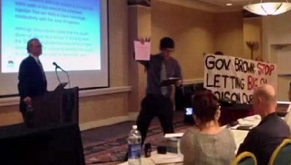 Californians Shame Regulators for Teaching Big Oil How to Skirt Law and Pollute Our Water
Californians Shame Regulators for Teaching Big Oil How to Skirt Law and Pollute Our Water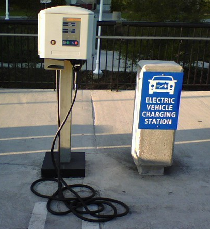 The Electrical Divide: Car Charger Deserts
The Electrical Divide: Car Charger Deserts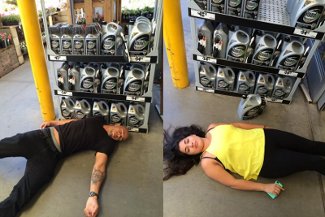 Southern California Swarms to Save the Bees in Solidarity with Honey Bee Day Around the Globe
Southern California Swarms to Save the Bees in Solidarity with Honey Bee Day Around the Globe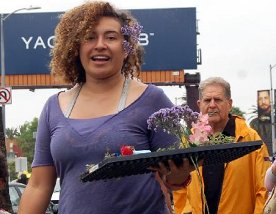 Los Angeles community members unite in Hollywood to #FarmLA and Plant Against Monsanto
Los Angeles community members unite in Hollywood to #FarmLA and Plant Against Monsanto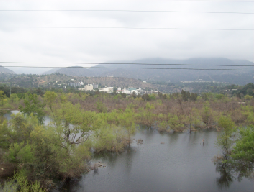 Report Back: 4th Annual Hahamongna Walkabout
Report Back: 4th Annual Hahamongna Walkabout